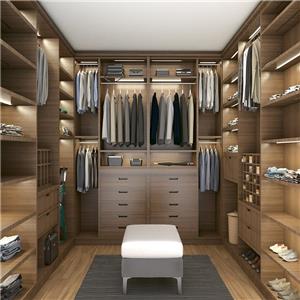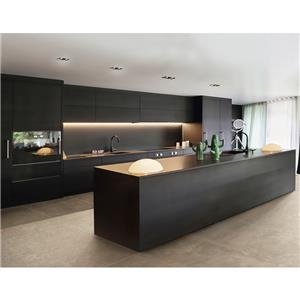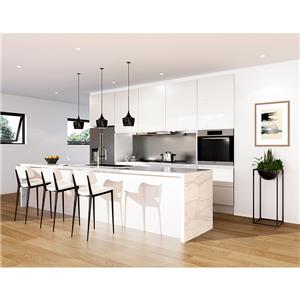Highlights of cabinet products at the 2024 Canton Fair: Design innovation and green technology lead future kitchen trends
Highlights of cabinet products at the 2024 canton fair design innovation and green technology lead future kitchen trends
I. Introduction
China Import and Export Fair, as one of the largest trade fairs in the world, is not only a platform for commodity trading, but also a vane of industry trends. At the 2024 Canton Fair, the cabinet product exhibition area is particularly eye-catching. Domestic and foreign exhibitors have demonstrated their latest design achievements and technological innovations, which not only heralds the future direction of change in kitchen space, but also brings new trends to the global home market.
The Canton Fair, the full name of China Export Commodities Fair, began in the spring of 1957 and is held in Guangzhou every spring and autumn. As the oldest and largest comprehensive international trade event in China, the Canton Fair not only showcases the diversity and high quality of Chinese goods, but also promotes direct exchanges between global buyers and suppliers and enhances international trade cooperation. It plays the role of a bridge connecting the Chinese market and the world, promotes export trade, and promotes international exchanges of technology and industries. It is known as "China's No. 1 Exhibition" and has made immeasurable contributions to global economic integration and China's foreign trade development.
As a core component of the home building materials field, the cabinet industry has become increasingly important. It not only reflects the trend of upgrading the quality of home life, but is also a key part of personalized and integrated solutions in the era of big homes. At this year’s Canton Fair, the cabinet product exhibition area has attracted much attention. It is expected to attract the attention of global buyers with innovative design, smart home integration, environmentally friendly material applications and other highlights. As an industry benchmark, the Canton Fair's cabinet exhibition area will promote international exchanges, showcase the latest trends and technological advances in the industry, and further consolidate the competitiveness and influence of the cabinet industry in the global market.
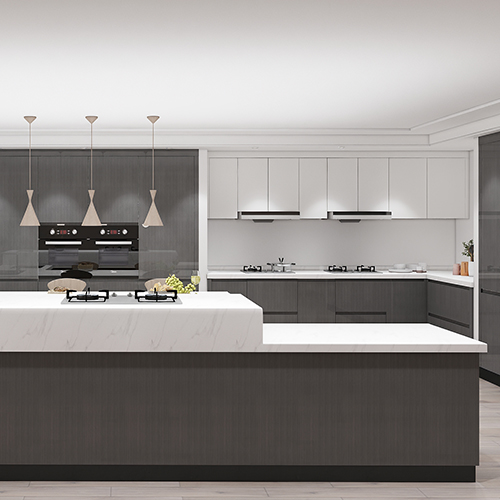
II. Innovation in design aesthetics
In terms of design aesthetics, this year's cabinet products have broken traditional boundaries. Minimalist design, with its clean lines and pure colors, has become the mainstream style respected by many exhibitors. At the same time, the fusion of retro trends and modern luxury elements adds a unique style to the cabinet design and meets the personalized and emotional needs of different consumers for kitchen space. Brands allow every consumer to have a unique kitchen space through customized services. From the color matching of cabinets, material selection to functional layout, every step reflects the ultimate pursuit of details.
1. Style trends
At the Canton Fair, the design styles of the exhibited cabinet products were highly diversified, meeting the individual needs of different consumer groups in the global market. Minimalist style cabinets, with their clean lines and elegant color combinations, emphasize the openness and practicality of space, attracting consumers who pursue a simple lifestyle. Retro trend cabinets create a nostalgic atmosphere by replicating classic elements, such as carved handles and distressed wood, and satisfy people's yearning for traditional culture and romantic feelings. Modern luxury style cabinets combine high-end materials such as stainless steel, marble and mirror glass, with exquisite details and light and shadow effects, showing a low-key and luxurious modern life aesthetic. In addition, there are pastoral styles that incorporate natural elements, pop art styles with bright colors, etc. Each design style spares no effort to show its unique charm, which not only enriches the choices of home decoration, but also promotes innovation in the field of cabinet design. and competition, pushing the entire industry to develop in a more diversified and refined direction.
2. Personalized customization
Cabinet brands deeply explore and accurately meet consumers' individual needs by providing a full range of customized services, which are mainly reflected in three aspects: color customization, material selection and functional layout. In terms of color, the brand provides rich color panels and customized paint services based on consumer preferences and interior design styles, from warm wood colors to fashionable bright colors, ensuring that the cabinets and the overall home environment are harmonious and unified. In terms of material selection, both beauty and durability are taken into consideration. From solid wood, artificial boards to new environmentally friendly materials, each material has its own unique touch and visual effect. Consumers can make choices based on budget and environmental awareness. In terms of functional layout, the brand uses one-on-one design consultation to understand users' cooking habits and storage needs, and flexibly plans the internal structure of the cabinets, such as drawer-type storage, corner baskets, lifting wall cabinets, etc., to maximize space utilization and ensure Kitchen operations are convenient and efficient. Through these meticulous customized services, cabinet brands not only satisfy consumers' pursuit of aesthetics, but also solve the space and functional problems encountered in real life, thereby standing out in the fierce market competition and establishing unique brand value and consumption. or loyalty.
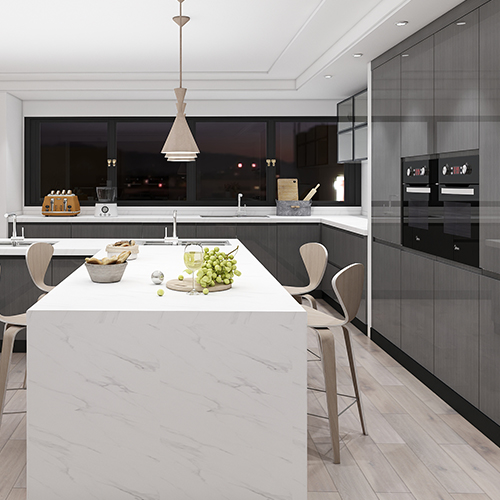
3. Furniture integration
①The integration of cabinet products and overall home design style is the key to creating a harmonious and unified interior decoration. First of all, the overall style of the home needs to be clearly defined at the beginning of the design, such as modern simplicity, Nordic nature, American country style or new Chinese style, etc. As the protagonist of the kitchen space, the cabinets’ shapes, lines and colors need to echo it. For example, the modern minimalist style can choose simple straight lines, white or light wood color cabinets to create a bright and spacious feeling; while the European classical style tends to have complex carvings, dark tones and golden decorations, showing a luxurious atmosphere.
②Material and texture are also the key to connection. Choose materials that are coordinated with the furniture, such as solid wood or wood grain cabinet door panels that match the wooden floor of the living room to maintain visual continuity. In addition, hardware accessories and lighting design cannot be ignored. Although they are small, they can play a finishing touch, unifying the style and improving the texture of the space.
③In terms of layout, consider the transition between the kitchen and adjacent spaces, such as the natural connection between the open kitchen and the dining room and living room. The cabinet design can appropriately draw on the colors or elements of the adjacent spaces to form a smooth spatial dialogue and jointly build a story-telling space. , a warm living environment. Through such meticulous consideration and design, the cabinets not only meet the functional needs, but also become an indispensable work of art in the overall home decoration, jointly telling the residents' life attitude and aesthetic pursuit.
III. Intelligent and functional trends
1. Intelligent control system
Modern cabinet design cleverly incorporates cutting-edge smart hardware, taking kitchen life to a new level. The integrated touch panel is embedded in the cabinet door, and you can control the built-in lighting, temperature and humidity with a light touch, and even connect to home appliances to achieve intelligent scene switching. The automatic sensor door slides open quietly without touching it, keeping the cabinets clean while adding a futuristic feel. The remote control system uses a smartphone APP to easily control the cabinet status no matter where you are, from food management to safety monitoring, everything is under control. There are also smart weighing drawers and automatic inventory management systems to accurately track stored items, making kitchen management efficient and convenient, demonstrating the perfect integration of technology and life.
2. Efficient storage solutions
Through a series of innovative designs, the cabinets on display cleverly solve the contradiction between limited kitchen space and increased storage needs, greatly improving space utilization. The multi-functional drawer design is one of the highlights. They are not only organized and separated to facilitate the classification and storage of kitchen utensils and ingredients, but some are also equipped with lifting devices to easily reach deep items. The use of rotating racks, especially in corner spaces, enables 360-degree rotation to pick up objects, making full use of every inch of space. Hidden storage designs make the kitchen look neater and more orderly, such as lift-type wall cabinets, folding tables, and even electrical cabinets embedded in the wall, which save space without losing modern aesthetics.
In addition, the modular and adjustable system is also the key to improving efficiency. The height of the shelves can be freely combined or adjusted according to the actual needs of the user to adapt to the storage of items of different sizes. These exquisite designs not only reflect a deep understanding of user needs, but also demonstrate the wisdom and creativity of the cabinet industry in creating unlimited possibilities within a limited space, making the kitchen space both practical and full of design.
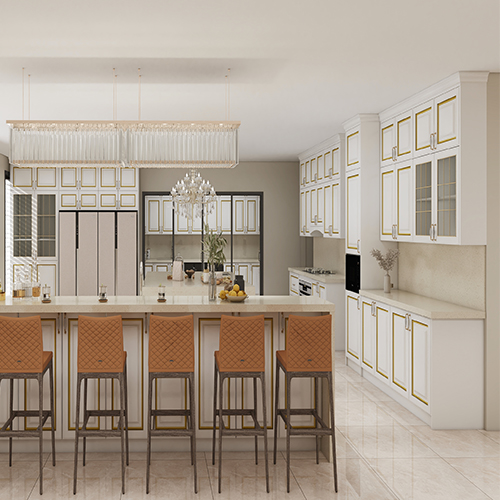
3. Health and environmental protection functions
The growing demand for healthy living in modern families has prompted continuous innovation in cabinet products, among which cabinets with air purification, antibacterial and anti-mildew functions are particularly eye-catching. This type of cabinet usually uses specially treated antibacterial boards, such as Daxin antibacterial boards, which can effectively inhibit bacterial growth, reduce kitchen pollution, and protect your family from harmful microorganisms. The air purification device is embedded in the cabinet and uses a high-efficiency filtration system to remove harmful substances such as oil smoke and formaldehyde in the air to keep the kitchen air fresh. Some designs also consider anti-mildew technology to ensure that cabinets remain dry and hygienic in humid environments.
These healthy features not only improve the quality of the kitchen environment and reduce the risk of disease transmission, but also extend the service life of the cabinets and reduce the burden of cleaning and maintenance. They perfectly fit in with the concept of modern families pursuing healthy, convenient and sustainable living. In the fast-paced life, creating a safer and cleaner cooking space for families is a positive response and satisfaction of such cabinet products to the health needs of modern families.
IV. Environmentally friendly materials and green production
1. Application of green materials
With the increasing awareness of environmental protection, the cabinet production industry is gradually turning to a sustainable development path, and the use of environmentally friendly solid wood, recycled materials and non-toxic coatings is becoming increasingly popular. Environmentally friendly solid wood, such as oak and walnut, has become the first choice for high-end cabinets because of its natural beauty, durability and renewable nature. Although the cost is higher, it will help reduce the environmental footprint in the long run. Recycled materials, such as recycled plastics, bamboo and boards made from agricultural waste, not only reduce resource consumption, but also reduce waste emissions. They are suitable for the mid-to-low-end market and meet consumer demand for both affordability and environmental protection.
Non-toxic coatings, such as water-based paint and plant-based paint, do not contain volatile organic compounds (VOCs), reducing the release of harmful substances during production and use, ensuring the health of workers and the safety of consumers at home. Although the application of these environmentally friendly materials may increase production costs initially, in the long run, it conforms to the trend of green consumption, enhances the brand image, and contributes to global environmental protection. Cabinet manufacturers continue to explore more environmentally friendly and efficient production methods through technological innovation and material research and development, and promote the industry's green transformation.
2. Low carbon production technology
Exhibitors have taken a series of proactive measures to reduce their carbon footprint, aiming to optimize production processes and use clean energy. First, by introducing automated and intelligent production lines, we can improve production efficiency, reduce energy consumption and waste of raw materials, and achieve lean production. Secondly, implement a circular economy model, such as recycling water resources and production waste, converting waste into energy or recycled materials, and reducing resource consumption and environmental pollution.
In terms of energy use, more and more companies are turning to renewable energy sources such as solar energy and wind energy, installing solar photovoltaic panels and wind turbines to replace traditional fossil fuels with clean electricity and significantly reduce greenhouse gas emissions. At the same time, we should optimize logistics and supply chain management and adopt low-carbon transportation methods, such as electric truck distribution, to reduce carbon emissions during transportation.
In addition, companies are also committed to obtaining environmental certifications, such as ISO 14001 environmental management system certification, which not only improves their own environmental management levels, but also sends a positive green signal to the market. These comprehensive measures demonstrate the exhibitors' commitment to sustainable development, not only enhance their brand image, but also contribute to global climate change mitigation.
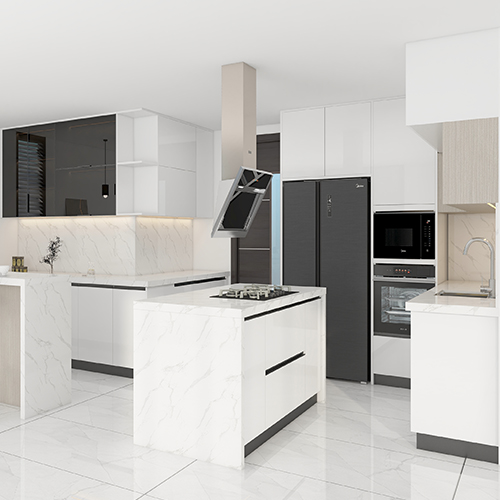
V. Brand strategy and international cooperation
1. Brand story and cultural output
Exhibiting brands use the Canton Fair as an international display platform to display corporate culture in multiple dimensions and effectively enhance their international brand image. First of all, the booth is carefully designed, integrating the brand logo and design concept, and visually conveying the essence of corporate culture. For example, the booth is built with sustainable materials to reflect the brand's emphasis on environmental protection. Secondly, organize special lectures or new product launches to share brand stories, design concepts and technological innovations, communicate in depth with global buyers, and establish emotional resonance.
Use digital means, such as AR/VR technology, to provide an immersive experience, allowing visitors to intuitively experience product features and application scenarios, and enhance interactivity and memory points. In addition, we actively participated in industry forums and business matching activities during the Canton Fair to demonstrate the company's industry leadership and social responsibility and enhance its influence in the industry.
Through media cooperation and social platform promotion, we can share exhibition highlights in real time and expand the brand's international exposure. Finally, provide high-quality customer service and follow-up, demonstrate professionalism and sincerity, consolidate customer relationships, and transform short-term exhibition effects into long-term brand loyalty. To sum up, through comprehensive strategies, participating brands not only successfully demonstrated the unique charm of corporate culture at the Canton Fair, but also effectively improved their brand image and competitiveness in the global market.
2. Cross-border cooperation cases
Cabinet companies have written many success stories by working closely with internationally renowned designers and cutting-edge technology suppliers, demonstrating innovation and win-win under a global perspective. For example, a domestic cabinet brand teamed up with a famous Italian designer to integrate Eastern and Western aesthetics and launched the "Future Kitchen" series. With its unique design concept, humanized functional layout and high-end materials, it has won widespread praise from domestic and foreign markets and successfully Entering the international market has enhanced the brand's international influence.
In another case, a cabinet manufacturing company cooperated with a German smart technology company to introduce advanced automated production lines and Internet of Things technology to develop cabinet products with remote control, smart sensing and other functions, which greatly improved product competitiveness and reduced costs. Energy consumption during the production process demonstrates the company's commitment to technological innovation and sustainable development.
These cooperations not only accelerate product iterations and upgrades and lead the industry trend, but also open a new chapter of global cooperation for enterprises, proving that in the context of globalization, resource sharing, cultural integration and technological innovation are important driving forces for the sustainable development of the cabinet industry.
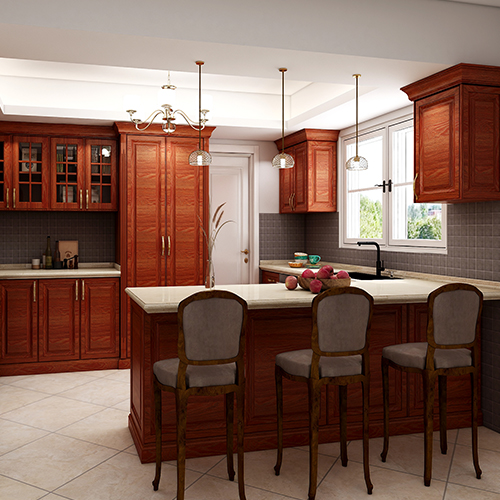
3. Market development strategy
Cabinet brands use the Canton Fair, an international business platform, to actively obtain feedback from the international market through a variety of methods, providing accurate basis for adjusting export strategies. First of all, face-to-face communication is the most direct way. Brand representatives communicate in depth with overseas buyers to collect direct feedback on product design, material preferences, price acceptance, etc., to understand changes in target market demand.
Secondly, use the market research services and data analysis reports of the Canton Fair to understand industry trends, competitor situations and emerging market trends, and provide a macro perspective for strategic adjustments.
Furthermore, participate in industry forums and seminars held on site, exchange experiences with international experts and peers, gain insight into the development direction and technological innovation of the global cabinet industry, and provide inspiration for product upgrades and market positioning.
In addition, we use the online Canton Fair platform and social media to expand brand reach, collect feedback and evaluations from a wider range of consumers, and provide data support for precision marketing and customized services.
Based on these comprehensive and in-depth international market feedback, cabinet brands can promptly adjust export product lines, optimize pricing strategies, improve service models, and even explore new international markets, thereby occupying a favorable position in global competition.
VI. Conclusion
At the Canton Fair, the cabinet product display was full of highlights, embodying the industry's unremitting pursuit of innovation and sustainability. First of all, design innovation became the focus. Exhibiting brands demonstrated the infinite possibilities of modern kitchen space through elements such as minimalist aesthetics, multi-functional integration, and intelligent control, satisfying global consumers' yearning for personalized and convenient life. Secondly, innovations in materials and processes, such as the application of environmentally friendly solid wood, recycled materials, and antibacterial and anti-mildew treatment technology, not only improve product quality, but also demonstrate the cabinet industry's responsibility for environmental protection.
In addition, intelligent cabinet solutions, such as the integration of smart sensors and remote control systems, not only enhance the user experience, but also lead the technology trend of future home furnishings. These highlights jointly reflect that the cabinet industry is promoting the development of the industry in a more environmentally friendly, intelligent and efficient direction through continuous technology research and development, material innovation and design optimization, which not only satisfies the market's pursuit of high-quality life, but also contributes to the realization of sustainable development. made a positive contribution to the goals. As an international stage, the Canton Fair has effectively promoted the global dissemination and exchange of these innovative results and accelerated the pace of industry transformation and upgrading.
In the future, the cabinet industry will develop in a more intelligent, personalized, and sustainable direction, integrating the Internet of Things and AI technology to provide customized solutions, while focusing on the application of green and environmentally friendly materials and circular economy. The design pursues the perfect combination of aesthetics and functionality to meet consumers’ needs for a healthy living space. In this process, the Canton Fair will continue to play the role of a bridge for global exchanges and cooperation, promote the display of technological innovation, international trade docking and industry trend insights, help cabinet companies expand the international market, lead the transformation and upgrading of the industry, and jointly build a green future for the global home furnishing industry.


